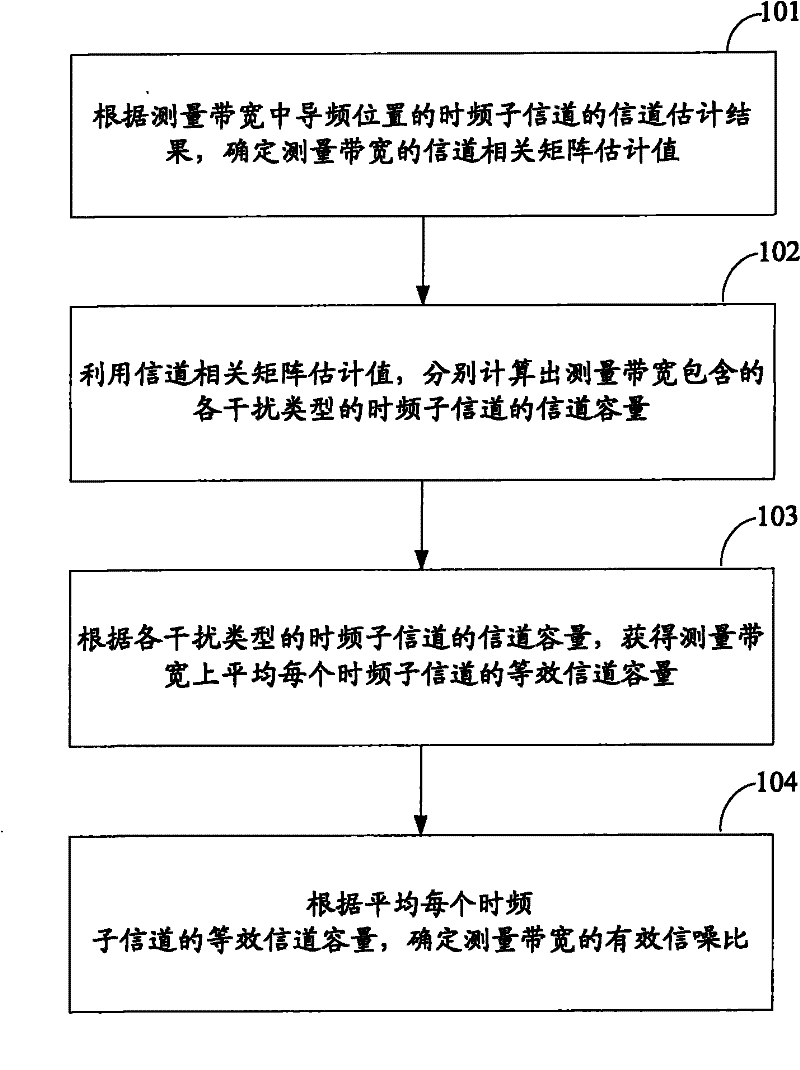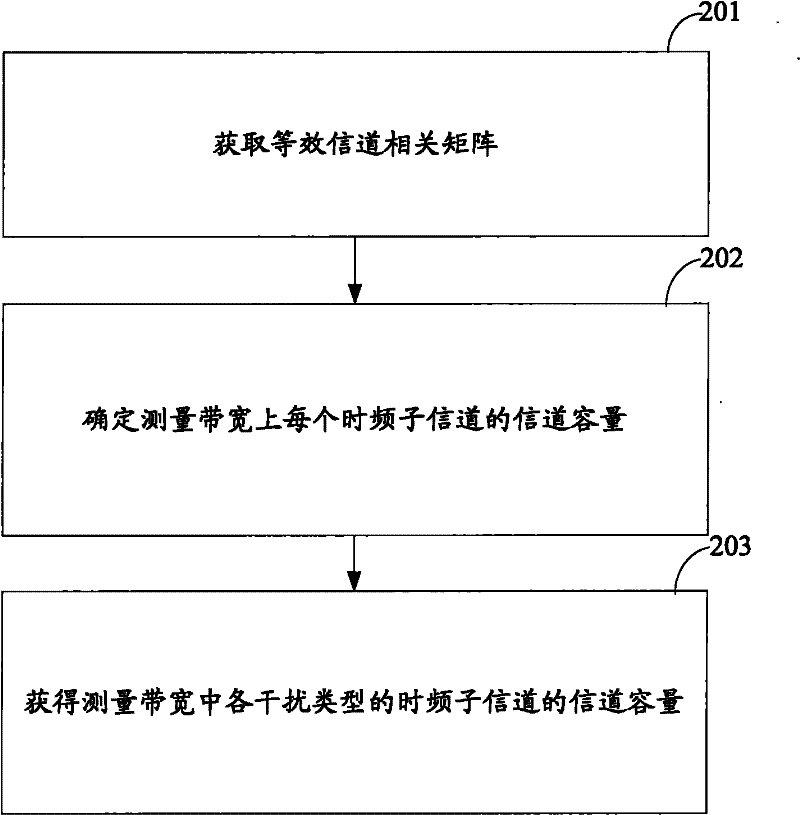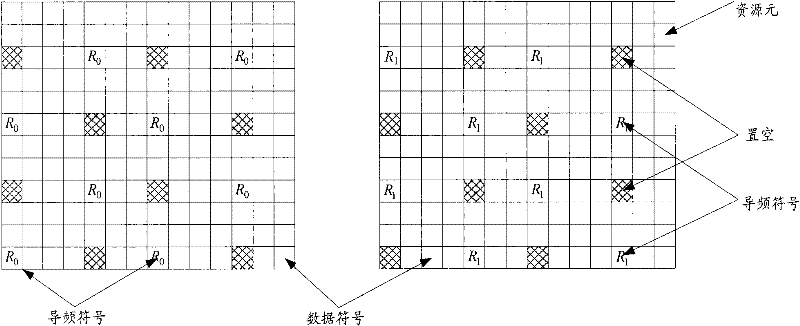Method and device for determining valid signal-to-noise ratio
A technology of signal-to-noise ratio and equivalent channel, applied in baseband systems, digital transmission systems, electrical components, etc., can solve the problems of difficult implementation and high computational complexity, and achieve the effect of reducing computational complexity
- Summary
- Abstract
- Description
- Claims
- Application Information
AI Technical Summary
Problems solved by technology
Method used
Image
Examples
Embodiment approach
[0055] During implementation, when OFDM is a multi-codeword OFDM system, there can be multiple implementations to obtain the equivalent channel capacity corresponding to each codeword The embodiment of the present invention provides an implementation mode, and the specific implementation mode is as follows:
[0056] According to the formula Average the equivalent channel correlation matrix corresponding to each precoding matrix to obtain the average equivalent channel correlation matrix
[0057] according to The diagonal elements of Divide the equivalent channel capacity of multiple codewords, using the formula , i=1, 2, ..., N C Obtain the equivalent channel capacity corresponding to the i-th codeword Among them, N C is the number of codewords in the OFDM system, The diagonal elements of are ω l , l=, 1,..., L, L represents the number of channel transmission layers, and the set of channel transmission layer sequence numbers corresponding to the i-th codeword is...
Embodiment 1
[0065] Embodiment 1: Effective SNR measurement in single-codeword closed-loop precoding mode
[0066] The effective signal-to-noise ratio measurement in the single-codeword closed-loop precoding mode includes calculating the estimated value of the channel correlation matrix, multiplying the precoding matrix, calculating the channel capacity, averaging the channel capacity, and calculating the effective signal-to-noise ratio.
[0067] Wherein, calculating the estimated value of the channel correlation matrix includes steps such as obtaining the channel estimation result of the pilot position LS, multiplying the matrix, accumulating and averaging, and subtracting the noise power.
[0068] When implementing the step of multiplying the precoding matrix, refer to 3GPP TS36.211 (3rd Generation Partnership Project Technical Specification, 36.211), for the single codeword closed-loop precoding mode, there are four optional precoding matrices In this case, only one precoding matrix is ...
Embodiment 2
[0072] Embodiment 2: Effective SNR measurement under two-codeword open-loop space division multiplexing mode
[0073] The effective signal-to-noise ratio measurement in the two-codeword open-loop space division multiplexing mode includes the steps of calculating the channel correlation matrix, multiplying the precoding matrix, calculating the channel capacity, averaging the channel capacity, dividing the channel capacity by codewords, and calculating the effective signal-to-noise ratio.
[0074] Wherein, calculating the estimated value of the channel correlation matrix includes steps such as obtaining the channel estimation result of the pilot position LS, multiplying the matrix, accumulating and averaging, and subtracting the noise power.
[0075] When implementing the step of multiplying the precoding matrix, refer to 3GPP TS36.211, for the two-codeword open-loop space division multiplexing mode of the second embodiment, there are two optional precoding matrices, and the tran...
PUM
 Login to View More
Login to View More Abstract
Description
Claims
Application Information
 Login to View More
Login to View More - R&D
- Intellectual Property
- Life Sciences
- Materials
- Tech Scout
- Unparalleled Data Quality
- Higher Quality Content
- 60% Fewer Hallucinations
Browse by: Latest US Patents, China's latest patents, Technical Efficacy Thesaurus, Application Domain, Technology Topic, Popular Technical Reports.
© 2025 PatSnap. All rights reserved.Legal|Privacy policy|Modern Slavery Act Transparency Statement|Sitemap|About US| Contact US: help@patsnap.com



